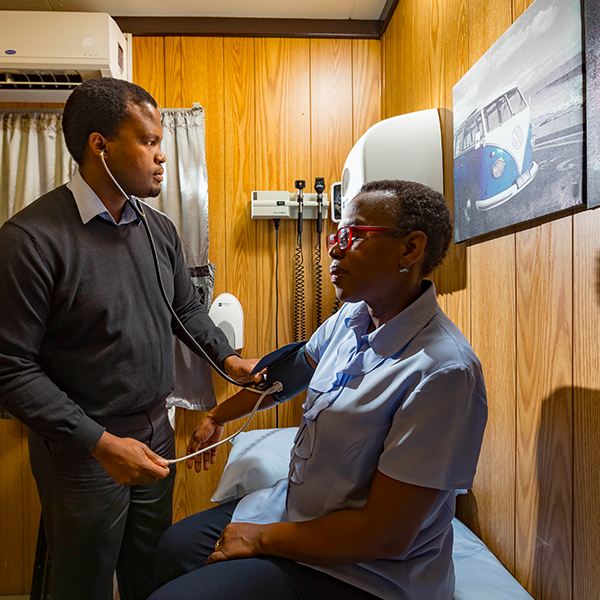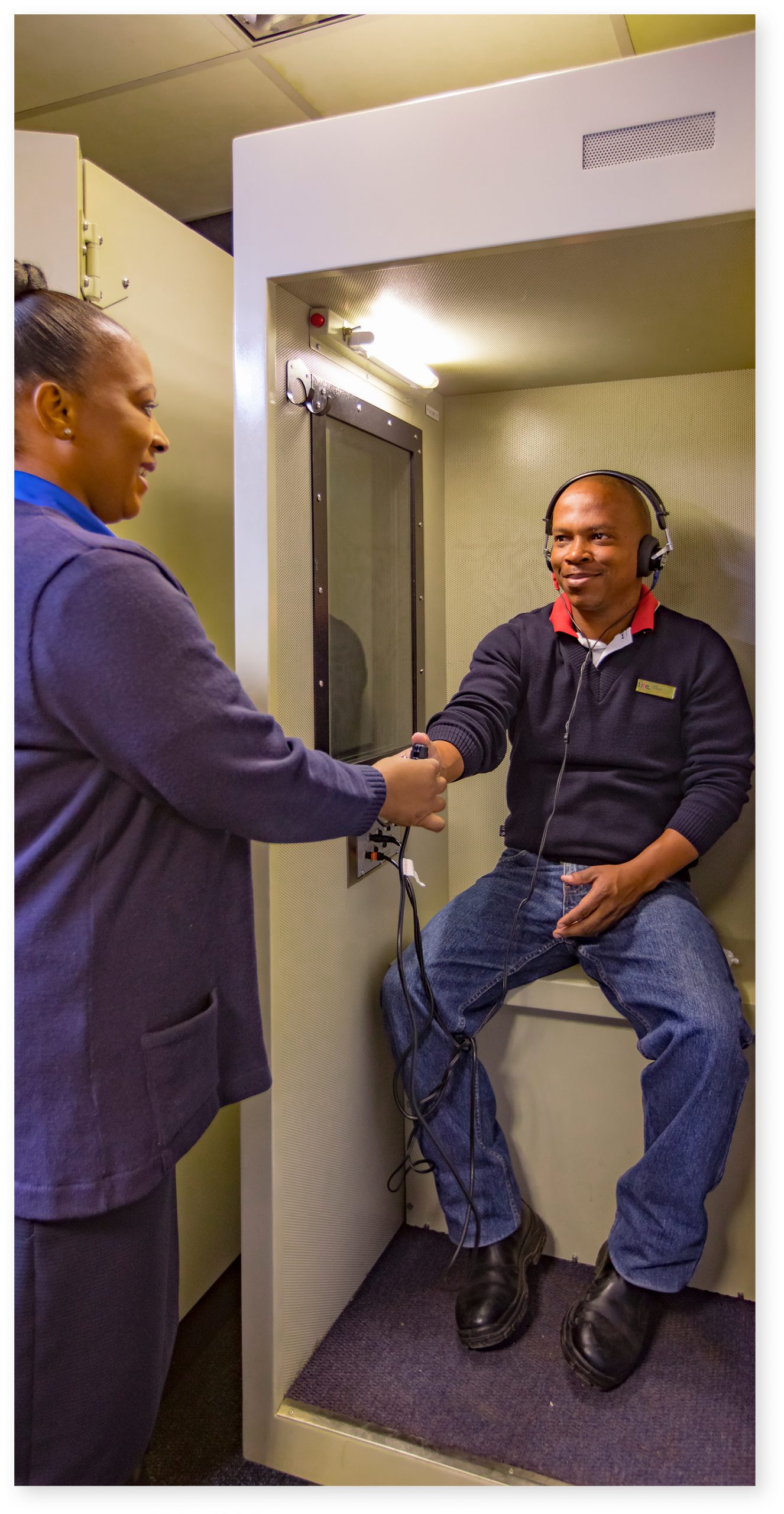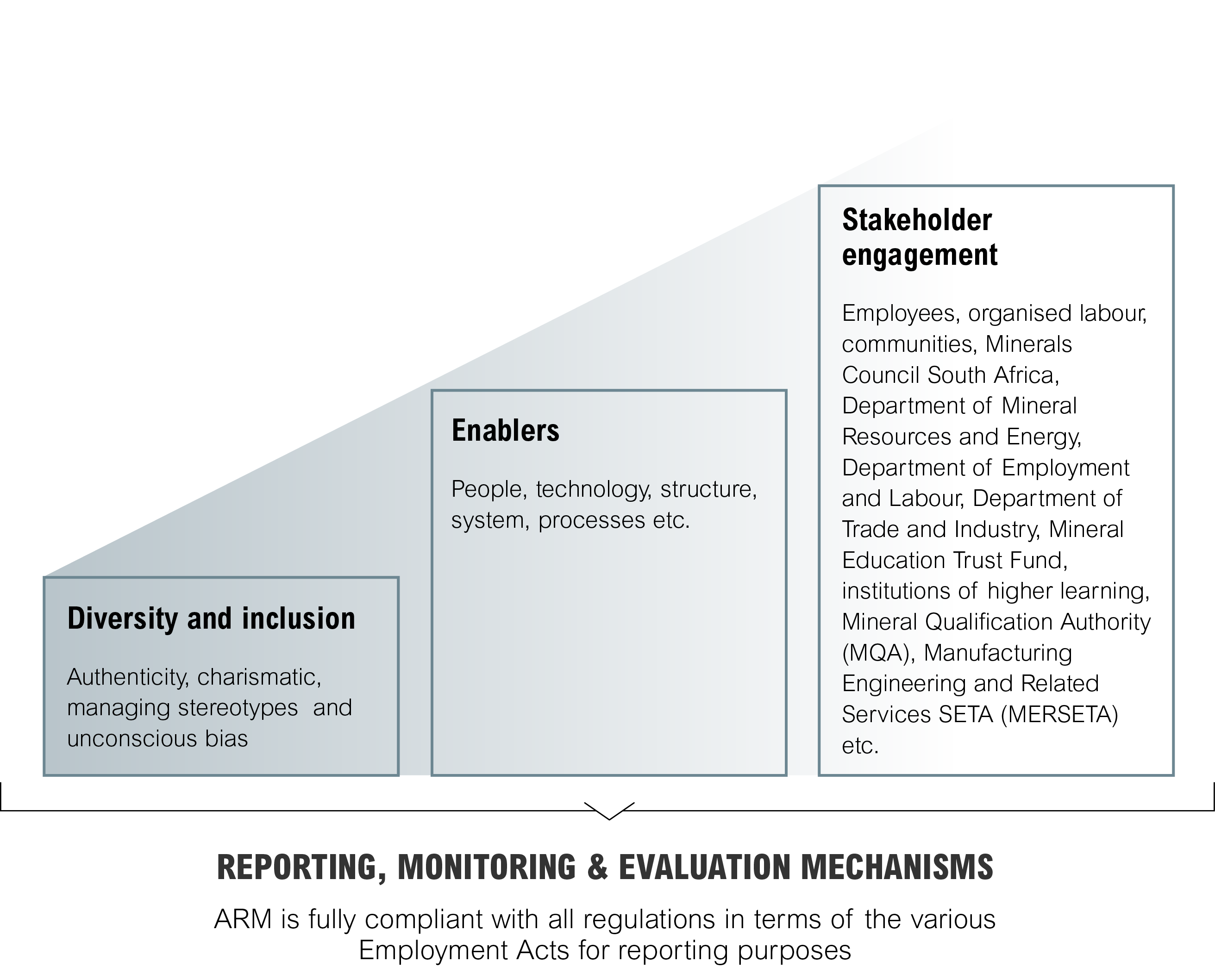SAFETY
Our employees are at the heart of everything we do. Assmang strives to be an employer of choice and to create a safe and healthy work environment.


Safety is a critical component of operational performance and directly affects our most important stakeholders – our employees. It also directly affects productivity, efficiency, our financial capital and relationships with broader stakeholder groups.
Our focus on safety, and the plethora of factors underpinning a safe work environment, is reflected in steady improvement on key indicators such as our non-lost-time and lost-time injury frequency rates.
Refer to the ASSMANG Sustainability report for our safety performance
Our values are at the core of our commitment to integrated wellness management. Occupational hygiene surveillance provides important leading indicators regarding exposure to hazards in the workplace, such as noise, particulate matter and fumes. Occupational health and wellness monitoring and management constitute integrated wellness management.
Occupational health & wellness
ASSMANG takes a precautionary approach to limit as far as practically possible, at-source workplace exposure to hazards, which include noise, particulate matter, fumes and hazardous substances. Exposure is managed through a combination of:
Medical surveillance is conducted for employees and contractors before they start working in risk areas to establish baselines for the relevant metrics, such as hearing and lung capacity.

ASSMANG’s approach to managing PTB, HIV & Aids and STIs aligns with the DoH’s National Strategic Plan 2017 – 2022 (NSP) and the requirements of the Mining Charter. The NSP is South Africa’s master plan for preventing and treating PTB, HIV & Aids and STIs, and focuses on reducing new infections, facilitating treatment and ensuring the cure of PTB and the suppression of HIV viral loads.
The Department of Health (DoH) has identified mine workers and peri-mining communities as key populations for certain diseases, including pulmonary tuberculosis (PTB), HIV and sexually transmitted infections (STIs). Our approach to employee wellness integrates these government initiatives to reduce and prevent these and other primary health challenges, and includes community awareness and outreach initiatives to address PTB, HIV & Aids and other chronic conditions among employees and in communities.
ASSMANG’s ability to create sustainable value for our stakeholders is dependent on how successful we are at sourcing, attracting, retaining and developing the skills needed to deliver on our Group strategy. The activities of our human capital facilitate the conversion of natural capital in the form of mineral and ore reserves, into financial capital.
ASSMANG’s Human Capital Strategy
ASSMANG’s ability to create sustainable value for our stakeholders is dependent on how successful we are at sourcing, attracting, retaining and developing the skills needed to deliver on our Group strategy. The activities of our human capital facilitate the conversion of natural capital in the form of mineral and ore reserves, into financial capital.
In support of our legal requirements, the following drivers are key to facilitate the implementation of HR Legal Compliance:
LEADERSHIP AND CULTURE
Balanced level Intellectual capacity (IQ) and Emotional
Intelligence (EQ)
INNOVATION
Creativity, agility, business continuity
COLLABORATION
Relationships and stakeholder management

